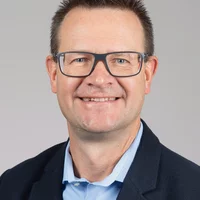Air pollution is currently the fifth leading cause of death worldwide. In order to mitigate diseases caused by air pollution it is important to understand the processes that cause smog in the first place, so that the correct preventative measures can be taken.
New particle formation is a term that describes the creation of particles in the atmosphere from gases. These particles may eventually make up smog or even grow large enough to act as seeds for cloud and fog droplets. Understanding particle formation and growth has been a key topic for some years, but a potential mechanism through which particles can survive and grow in the presence of smog has eluded scientists until now.
When particles are formed, they grow through the condensation of vapors. They must grow fast enough so that they are not engulfed by other larger particles, referred to as the coagulation sink. Smaller particles are faster, and so loss by coagulation is more likely compared to larger particles. Once the particles are grown they become slower and less likely to be lost by coagulation. So, the likelihood of a particle’s survival is dependent on a balance between the growth rates and the coagulation sink. Previous understanding was that growth rates in cities are only up to a few times greater than those in clean environments. Therefore, under the highly polluted conditions seen in cities with smog, newly formed particles aren’t expected to survive very long. However, this is not what is observed in ambient measurements, as particles are seen growing through the most critical size range (up to around 10 nm).
To solve this mystery, experiments were conducted at the CLOUD chamber at CERN, in an international collaboration, which the lab of atmospheric chemistry at PSI is a part of. For a series of experiments, typical urban gases were injected into the CLOUD chamber, specially designed to study interactions of the atmosphere in controlled conditions.
In the article by Wang et al. (2020) growth rates are reported at least 100 times faster than typical rates previously observed. As it turns out, the key gases, which may answer this question, are nitric acid (HNO3) and ammonia (NH3). Nitric acid is common in cities; it is formed from reactions of NO2, which is emitted from cars and other combustion sources. Ammonia is also ubiquitous in much of our atmosphere, where the main source is from agriculture (as many nitrogen containing molecules are used as fertilizer), plus a certain fraction from traffic exhaust (three-way catalysts in gasoline cars and selective catalytic reduction catalysts in modern diesel cars). Although both of these gases are already known to be present in cities, and have been measured as a significant fraction of aerosol mass, the common belief was that these vapors are not important for the growth of small particles.
The paper shows that at low temperatures (below around 5°C), in the presence of both ammonia and nitric acid, ammonium nitrate salt can form rapidly on particles, and thus grow them to large sizes where they are less vulnerable to coagulation. Under normal conditions, aerosols are in balance with the gases surrounding them, this is called equilibrium. In cities, there are many sources of emissions, which can lead to in-homogeneities in the gas concentrations. This allows for what is called supersaturation of a gas above a particle, where the gas concentration is higher than it would be at equilibrium and so the gas wants to be in the particle. Because of their high concentrations, these vapors can rapidly grow particles before equilibrium is again established. Such inhomogeneity is quite likely to occur in cities, and so the phenomenon of rapid growth may play a key role in the survival of small particles during smog events.
Contact:
Dr. Imad El Haddad, Ruby Marten
Group leader, PhD Student
Paul Scherrer Institute PSI, 5232 Villigen PSI, Switzerland
Telephone: +41 56 310 29 95
E-mail: imad.el-haddad@psi.ch, ruby.marten@psi.ch
Original Publication:
Title: Rapid growth of new atmospheric particles by nitric acid and ammonia condensation
Authors: Mingyi Wang, Weimeng Kong, Ruby Marten, Xu-Cheng He, Dexian Chen, Joschka Pfeifer, Arto Heitto, Jenni Kontkanen, Lubna Dada, Andreas Kürten, Taina Yli-Juuti, Hanna E. Manninen, Stavros Amanatidis, António Amorim, Rima Baalbaki, Andrea Baccarini, David M. Bell, Barbara Bertozzi, Steffen Bräkling, Sophia Brilke, Lucía Caudillo Murillo, Randall Chiu, Biwu Chu, Louis-Philippe De Menezes, Jonathan Duplissy, Henning Finkenzeller, Loic Gonzalez Carracedo, Manuel Granzin, Roberto Guida, Armin Hansel, Victoria Hofbauer, Jordan Krechmer, Katrianne Lehtipalo, Houssni Lamkaddam, Markus Lampimäki, Chuan Ping Lee, Vladimir Makhmutov, Guillaume Marie, Serge Mathot, Roy L. Mauldin, Bernhard Mentler, Tatjana Müller, Antti Onnela, Eva Partoll, Tuukka Petäjä, Maxim Philippov, Veronika Pospisilova, Ananth Ranjithkumar, Matti Rissanen, Birte Rörup, Wiebke Scholz, Jiali Shen, Mario Simon, Mikko Sipilä, Gerhard Steiner, Dominik Stolzenburg, Yee Jun Tham, António Tomé, Andrea C. Wagner, Dongyu S. Wang, Yonghong Wang, Stefan K. Weber, Paul M. Winkler, Peter J. Wlasits, Yusheng Wu, Mao Xiao, Qing Ye, Marcel Zauner-Wieczorek, Xueqin Zhou, Rainer Volkamer, Ilona Riipinen, Josef Dommen, Joachim Curtius, Urs Baltensperger, Markku Kulmala, Douglas R. Worsnop, Jasper Kirkby, John H. Seinfeld, Imad El-Haddad, Richard C. Flagan & Neil M. Donahue
Acknowledgement to:
The research is supported by the Swiss National Science Foundation no. 172602 and the MSCA-ITN project CLOUD-MOTION no. 764991. We thank CERN for supporting CLOUD with important technical and financial resources, and for providing a particle beam from the Proton Synchrotron.


